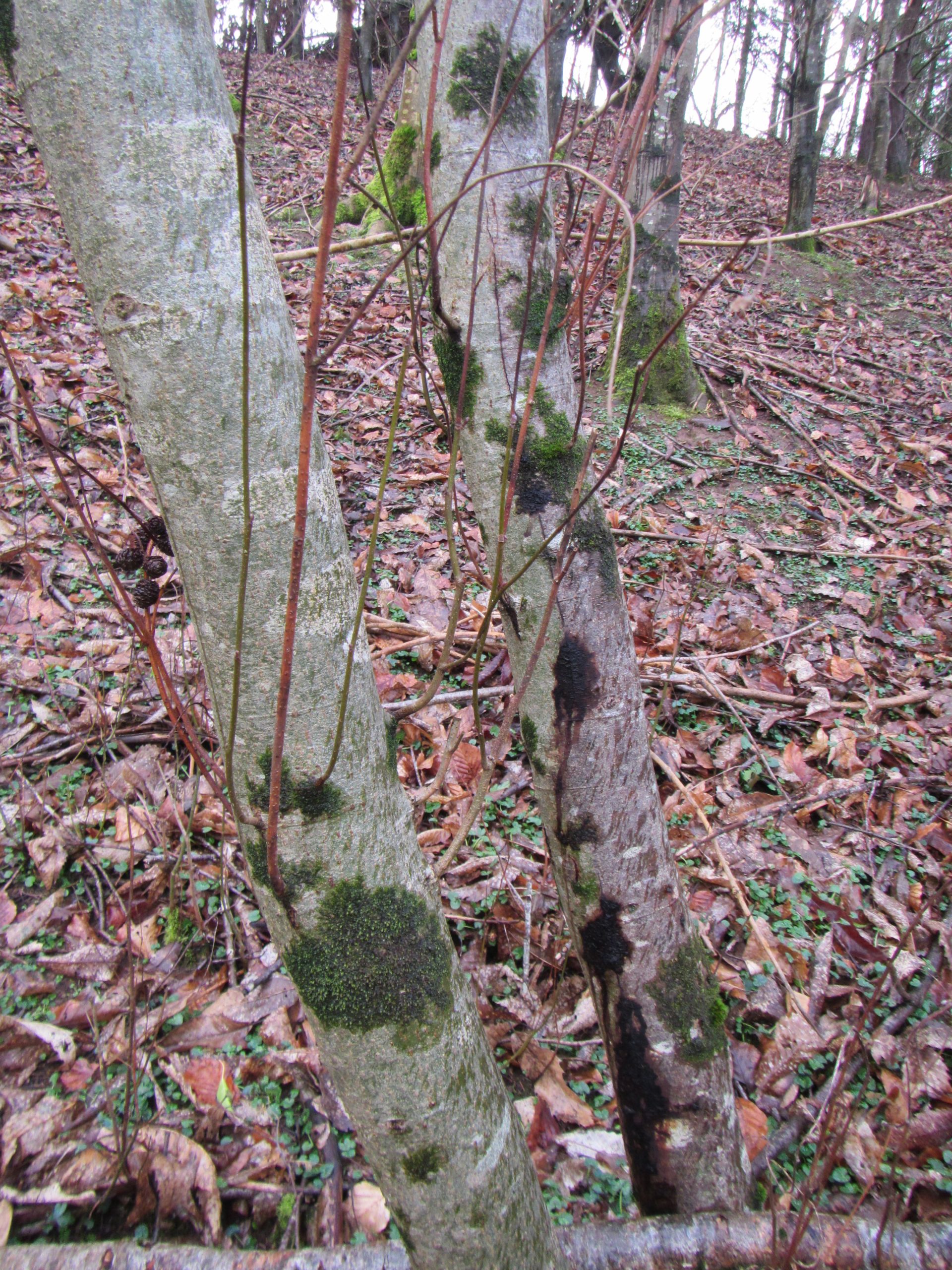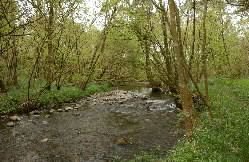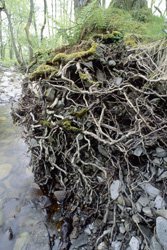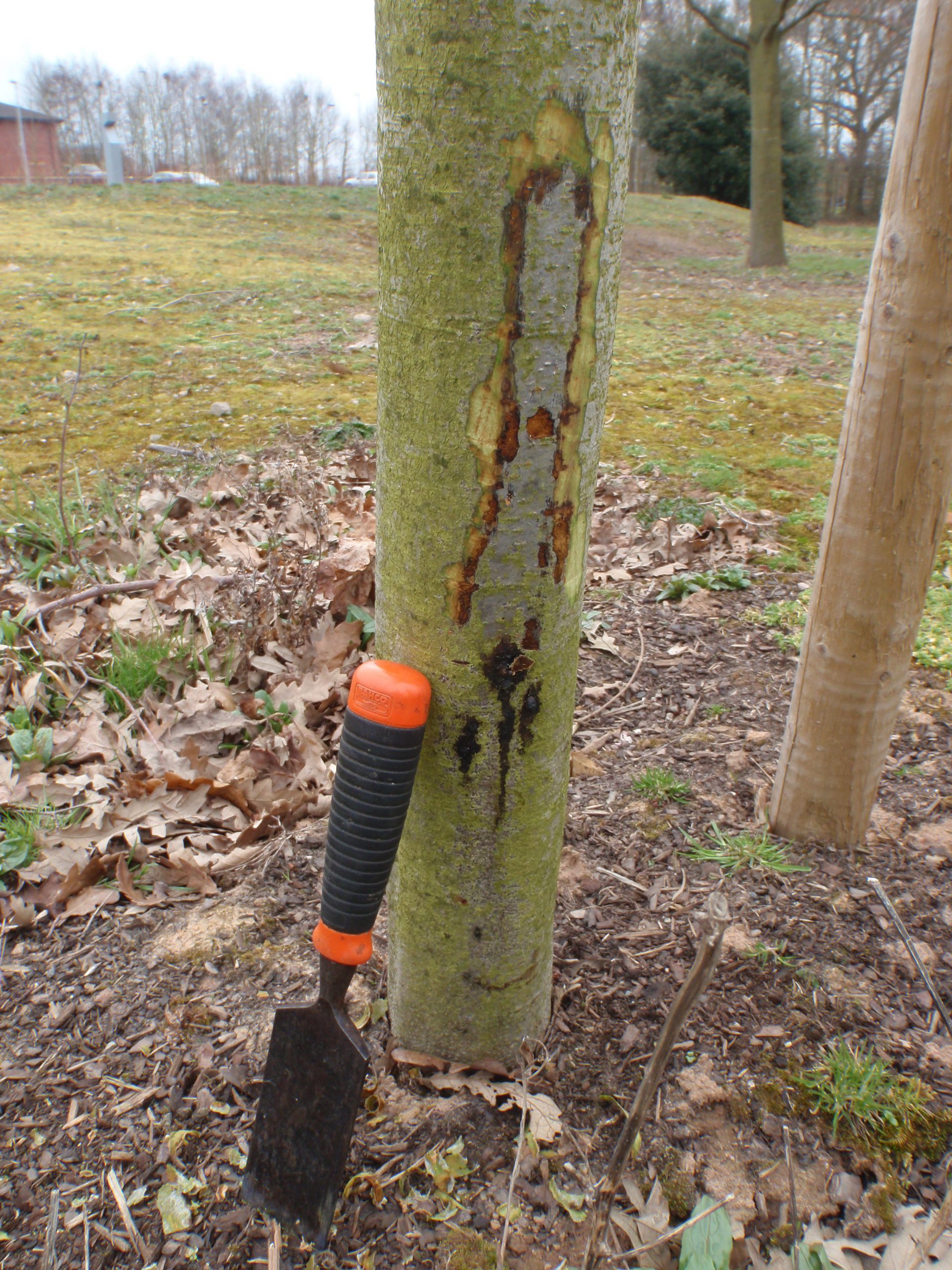Present in United Kingdom
Not reportable
Scientific name of causal agent – Phytophthora alni (P. alni)

Phytophthora disease of alder is a disease of alder trees (trees in the Alnus genus) caused by an algae-like organism called Phytophthora alni (P. alni). It is considered to be one of the most important diseases of natural ecosystems to arise in Europe in the late 20th and early 21st centuries.
Phytophthora alni is widespread in Great Britain. A record of all the mapped findings of P. alni where its identity has been confirmed in the laboratory is available, although the frequency with which visible symptoms can be found on alder indicates it is even more widespread than the map suggests. The number of trees affected has increased steadily since it was first discovered here in 1993, and probably a third of our alder trees are now affected. More specifically:
The disease is also widespread in Europe, with particularly heavy losses of alder trees reported from north-eastern France, and Bavaria in southern Germany.
A sub-species of the organism, called P. alni subsp. uniformis, has been found infecting red alder in Alaska.
P. alni can infect all species of alder, including the UK’s native common or black alder (Alnus glutinosa) and the other two species widely planted here, which are Italian alder (A. cordata) and grey alder (A. incana). Green alder (A. viridis), another species native to continental Europe, but less often used here, is also susceptible.
It appears to be highly specific to alder species, and is not known to affect plants in any other genus.

Alder trees dominate wet woodlands and are abundant along streams and rivers (above), where their roots (below) help to stabilise the banks and prevent erosion.

They provide valuable habitat and food sources for a wide variety of plant and animal life, including nesting sites among the roots for otters.
Alder trees are a natural choice for use in flood-mitigation schemes, and the nitrogen-fixing nodules on their roots make them useful for soil conditioning and fertility enhancement on wasteland and brownfield sites.
Alder timber tolerates wet conditions very well, and it has traditionally been used for products where that quality is essential, such as piles, boats and water pipes. It coppices well and makes good charcoal, and modern uses include veneer, pulp and plywood.
Any significant loss of alder trees would put these benefits at risk.
Affected trees can display some of the following symptoms.

We advise the following measures.
Forest Research has been assessing the impact of various Phytophthora species, including P. ramorum, P. kernoviae and P. lateralis. Our research aimed to:
Dr Joan Webber or contact our Tree Health Diagnostic and Advisory Service.